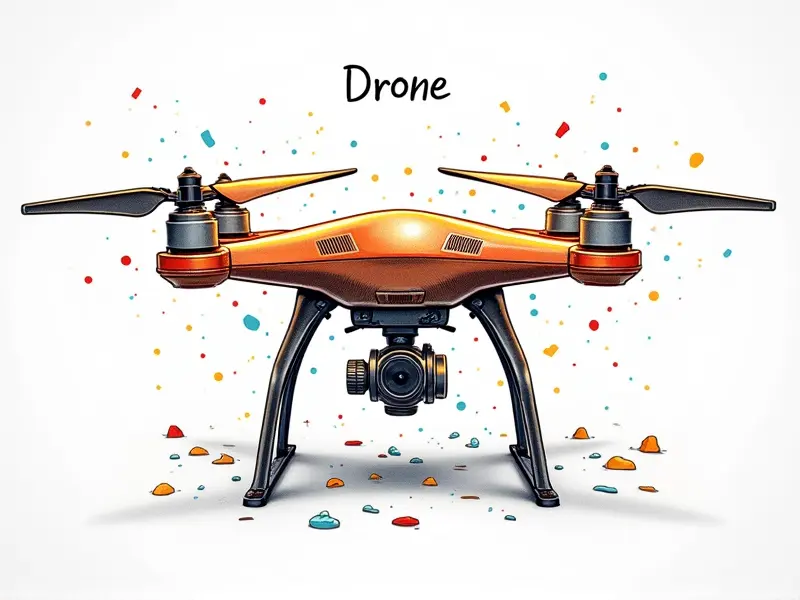Drone camera settings

Drone Camera Settings: A Comprehensive Guide
Welcome to the ultimate guide on optimizing your drone's camera settings. Whether you're a beginner or an experienced pilot, understanding how to adjust and fine-tune your drone's camera can significantly enhance the quality of your footage and photos. In this article, we'll cover everything from basic settings for beginners to advanced techniques for FPV racing drones.
Best Drone Camera Settings for Beginners
Starting out with a new drone can be overwhelming, especially when it comes to camera settings. Here are some essential tips and recommendations:
- Resolution: Set your resolution to 4K if available; otherwise, aim for the highest possible.
- Frame Rate: Start with a frame rate of 30fps or 60fps depending on your drone's capabilities and intended use.
- ISO: Keep ISO as low as possible to minimize noise, typically around 100-200.
- White Balance: Use automatic white balance for most situations; adjust manually if needed.
Optimal Camera Settings for FPV Racing Drones
FPV racing drones require specific settings to ensure clear visibility and smooth video transmission. Here are some key adjustments:
- Resolution: Opt for 720p or 1080p depending on your goggles' resolution.
- Frame Rate: Higher frame rates like 60fps or 90fps provide smoother video and better reaction time.
- ISO: Keep ISO low to avoid noise, but increase it slightly if you're flying in darker conditions.
Mastering Exposure in Your Drone Camera Settings
Proper exposure is crucial for capturing well-lit and vibrant images. Here’s how to adjust your drone's exposure:
- Auto Exposure (AE): Use AE mode for most situations, but switch to manual if you need more control.
- Exposure Compensation: Adjust this setting to brighten or darken the image according to your needs.
- Brightness: Fine-tune brightness in manual exposure mode to achieve optimal lighting conditions.
Drone Camera Frame Rate Explained
The frame rate determines how many frames are captured per second, affecting the smoothness and detail of your footage. Here’s what you need to know:
- 30fps: Suitable for most general use; provides a good balance between quality and file size.
- 60fps: Ideal for fast-moving subjects or aerial acrobatics, offering smoother motion and better detail.
Sharpen Your Drone Videos with Proper ISO Settings
The ISO setting controls the camera's sensitivity to light. Here’s how to use it effectively:
- Low Light Conditions: Increase ISO gradually until you achieve a good balance between noise and brightness.
- Sunny Days: Keep ISO low (100-200) for the best image quality without graininess.
White Balance Tips for Drone Photography
Correct white balance ensures accurate colors in your images. Here are some tips:
- Auto White Balance (AWB): Use AWB for most situations; it adapts to different lighting conditions.
- Manual White Balance: Set manually if you notice color casts or inconsistencies in your footage.
HDR Mode: Enhance Your Drone Images Easily
High Dynamic Range (HDR) mode captures a wider range of light and dark details. Here’s how to use it:
- Enable HDR: Turn on HDR in your drone's camera settings for scenes with high contrast.
- Test Different Settings: Experiment with different HDR modes or bracketing options for optimal results.
Fine-Tuning Focus Modes on Drones
Selecting the right focus mode can greatly improve image sharpness and clarity. Here’s what to consider:
- Auto Focus (AF): Use AF for most scenarios; it quickly adjusts focus based on distance.
- Manual Focus (MF): Switch to MF if you need precise control over the focal point.
Quick Guide to RC Quadcopter Camera Settings
RC quadcopters require specific camera settings for optimal performance. Here’s a quick guide:
- Resolution: Choose 720p or 1080p depending on your goggles.
- Frame Rate: Opt for higher frame rates like 60fps or 90fps for smoother video transmission.
Essential Camera Setup Tips for RC Airplanes
RC airplanes often require different camera settings due to their unique flight characteristics. Here are some essential tips:
- Stabilization: Enable image stabilization to reduce vibrations and ensure smooth footage.
- Resolution: Opt for a resolution that balances quality with file size, typically 1080p or lower.
- Frame Rate: Use a frame rate of 30fps unless you need higher detail for high-speed maneuvers.
Mastering RC Helicopter Camera Adjustments
RC helicopters present unique challenges due to their vertical flight capabilities. Here’s how to optimize your camera settings:
- Stabilization: Use advanced stabilization modes to counteract the helicopter's inherent vibrations.
- Resolution: Opt for a lower resolution like 720p if you're flying in tight spaces or indoors.
- Frame Rate: Higher frame rates can help capture smoother footage during rapid ascents and descents.
Conclusion
Mastery of your drone's camera settings is crucial for achieving high-quality images and videos. Whether you're flying a quadcopter, airplane, or helicopter, understanding the nuances of resolution, frame rate, ISO, white balance, and focus modes will elevate your aerial photography and videography to new heights. Experiment with different settings in various lighting conditions to find what works best for your specific needs and preferences.
By following these tips and guidelines, you'll be well-equipped to capture stunning visuals that showcase the beauty of flight from a unique perspective.

